




Rudolf Burnitz (6 December 1788 - 28 January 1849) was a German neo classical and early historicist architect. Burnitz was born in Ludwigsburg.





Rudolf Burnitz (6 December 1788 - 28 January 1849) was a German neo classical and early historicist architect. Burnitz was born in Ludwigsburg.
Burnitz was a student of Friedrich Weinbrenner in Karlsruhe, where he studied mathematics and technical sciences. In 1810 he joined the Württemberg Corps of Engineers from 1810 to 1816 during the Napoleonic Wars, in which time he was stationed at the Stuttgart and Ludwigsburg garrisons. During his military career, Burnitz was involved in the reconstruction of the Ludwigsburg Palace. In 1816 he resigned at the rank of lieutenant.
In an abandoned site, Burnitz was in charge of construction from 1816-1819 of Hohenzollern Castle in Hechingen which was never finished due to lack of funds. From 1820 and 1821 he travelled through Venice, Florence, Rome and Naples. By the end of 1821 he went to Frankfurt, where he gained citizenship in 1822. Burnitz belonged to a group of city architects including Johann Friedrich Christian Hess , and Friedrich Hull who shaped the classical Frankfurt cityscape of the 19th century.
Despite his career as an architect, he undertook further travel within Germany, and also to the Netherlands and Belgium. Burnitz was appointed in 1824 to Inspector and Technical advisor by the Prince of Hohenzollern-Sigmaringen, Anton Aloys.
In 1831, with the partnership of Frankfurt entrepreneur Johann Hermann Osterrieth, Burnitz founded "Kronthaler Actien Club", also called "Cur-Anstalt of Crone Thal near Cronberg joint-stock company". He then began work surveying and preparing a parcel of land. After obtaining a building permit Burnitz and Osterrieth built a spa and bath house with catering from 1832–33, to offer a luxury bath house to customers. However, by 1845 the company was resold due to a lack of profit.
In 1832 he requested from the Senate of the Free City of Frankfurt to establish a steam mill. It would have become the first stationary steam engine of Frankfurt. The Senate approved its construction as a grain, board, and grinding mill, but Burnitz renounced his involvement due to this amendment. It was not until four years later that Senator Johann Adam Beil approved the first steam engine in Frankfurt to be constructed.
From 1834 to 1837 he constructed the French Reformed Church in Friedrichsdorf. Then, from 1842–43, he constructed his most famous work, the Burnitz court hall, now part of the Historical Museum of Frankfurt. It is also the only one of his works in which he left his usual strict classic style in favor of a more neo-Romanesque historicism.
Burnitz married on May 2, 1823, Maria Sophia Saltzwedel (born 1788). The marriage produced six children, including their eldest son and later architect Rudolf Heinrich Burnitz. Burnitz since 1833 also was guardian of his orphaned nephew, the lawyer and painter Peter Burnitz (born 1824).
Rudolf Burnitz died on January 28, 1849, in Frankfurt am Main. His grave is located in the Frankfurt's main cemetery in the Masonic Lodge of Frankfurt.

Johann Heinrich von Dannecker was a German sculptor.

The Städel, officially the Städelsches Kunstinstitut und Städtische Galerie, is an art museum in Frankfurt, with one of the most important collections in Germany. The Städel Museum owns 3,100 paintings, 660 sculptures, more than 4,600 photographs and more than 100,000 drawings and prints. It has around 7,000 m2 (75,000 sq ft) of display and a library of 115,000 books.
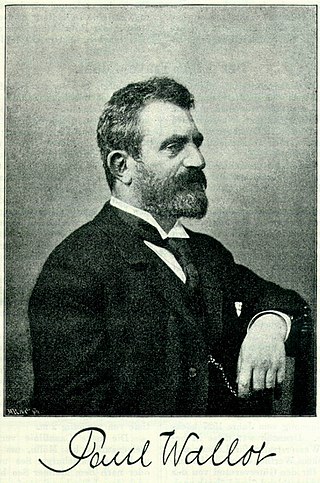
Johann Paul Wallot was a German architect of Huguenot descent, best known for designing the Reichstag building in Berlin, erected between 1884 and 1894. He also built the adjacent Palace of the President of the Reichstag, finished in 1904, and the former Saxon Ständehaus state diet building of 1906 at Brühl's Terrace in Dresden.

Karl Friedrich Lessing was a German historical and landscape painter, grandnephew of Gotthold Ephraim Lessing and one of the main exponents of the Düsseldorf school of painting.
Walter Boehlich was a German journalist, literary critic, literary editor and translator.
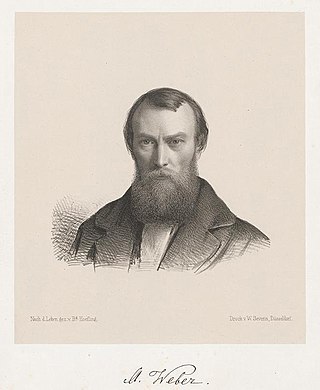
Johann Baptist Wilhelm August Weber was a German painter; associated with the Düsseldorfer Malerschule.

Georg Ludwig Kriegk was a German historian and archivist born in Darmstadt.

Karl Philipp Fohr, a brother of Daniel Fohr, was a German painter, born at Heidelberg in 1795.
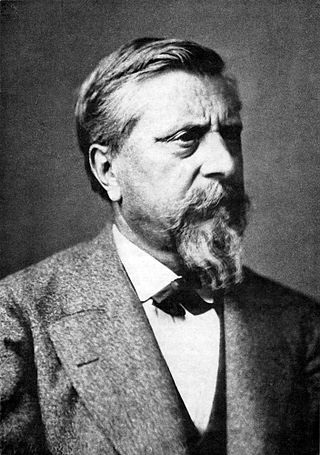
Carl Theodor Reiffenstein was a German landscape and architecture painter who created an invaluable historical record of Frankfurt am Main.

Carl Peter Burnitz was a German landscape painter who began as a lawyer.
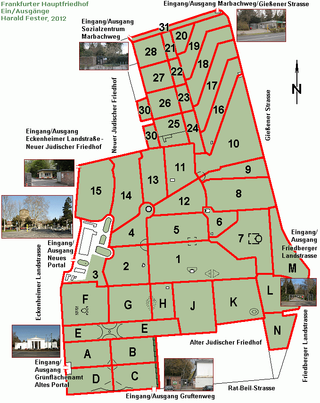
Friedrich Traugott Wettengel was a Bohemian Lutheran theologian.

Karl Friedrich Moest was a German sculptor.

Herman Graf was a German painter known for his introspective interior scenes.
Martin Sommerfeld was a Jewish emigre from Nazi Germany to the U.S. who was a professor at the University of Frankfurt and subsequently at Columbia University, the City College of New York, Smith College, and Middlebury College, where he taught German language and literature. He authored and edited a number of volumes on German literature from the 16th to the 20th centuries, and he wrote numerous contributions to the four-volume Reallexikon der deutschen Literaturgeschichte (1925–31).
Christian Friedrich Baz was a German legal scholar, a representative at the Duchy of Württemberg's state convention or 'Landtag' and from 1796 to 1805 mayor of Ludwigsburg. Born in Stuttgart, he supported the Age of Enlightenment and was open to French Revolutionary ideals, backing the individual freedom and rights of Württemberg's citizens. He was one of the landtag's reformers and soon became a radical and an opponent of Grand Duke Frederick. He was arrested twice and spent almost two years imprisoned in the Hohenasperg, Schloss Solitude in Stuttgart and another fortress in Bohemia. He died in 1808 in Waiblingen.

The fortifications of Frankfurt were a system of military defences of the German city of Frankfurt am Main which existed from the Middle Ages into the 19th century. Around 1000 the first city wall was built. It enclosed the area of what is now the Königspfalz in modern Frankfurt. In the twelfth century the settlement expanded into what is now Altstadt. For its protection an additional wall, the Staufenmauer, was erected. Starting in 1333, the Neustadt suburb developed north of the Altstadt and was encompassed by an additional wall with five gates. In the fifteenth century, a "landwehr border" was created around the entire territory of the Free City of Frankfurt. Beginning in 1628, the medieval city wall was developed to form a bastion fortress under the municipal architect Johann Dilich.
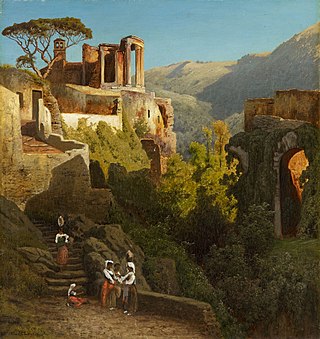
Carl Jungheim was a German landscape painter, associated with the Düsseldorfer Malerschule.

Johann Jakob Jung was a German painter, specializing in religious subjects, and a member of the Nazarene movement.

Carl Balthasar Malß was a German poet, architect and theatre director.